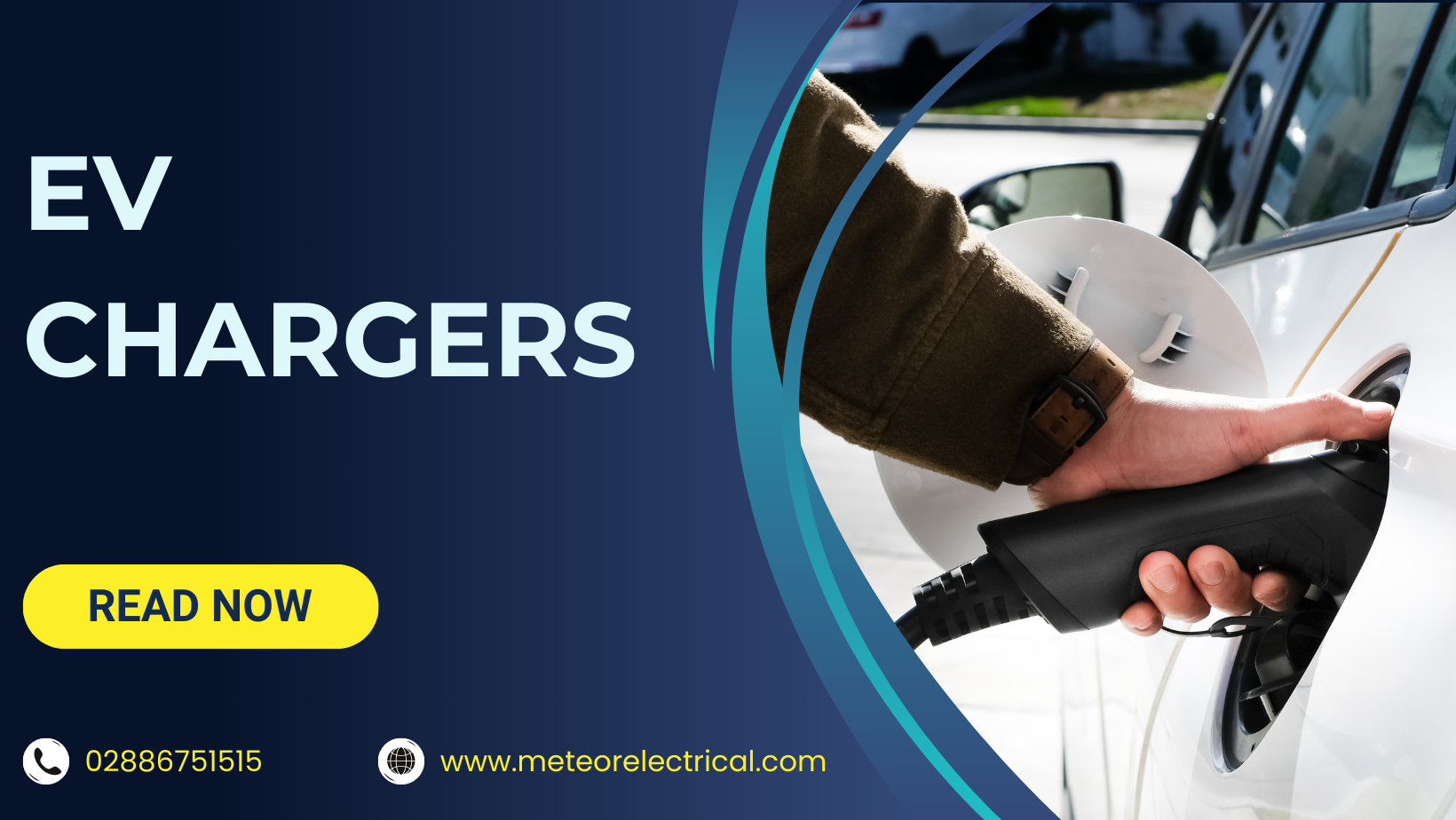Tethered and Untethered EV Chargers
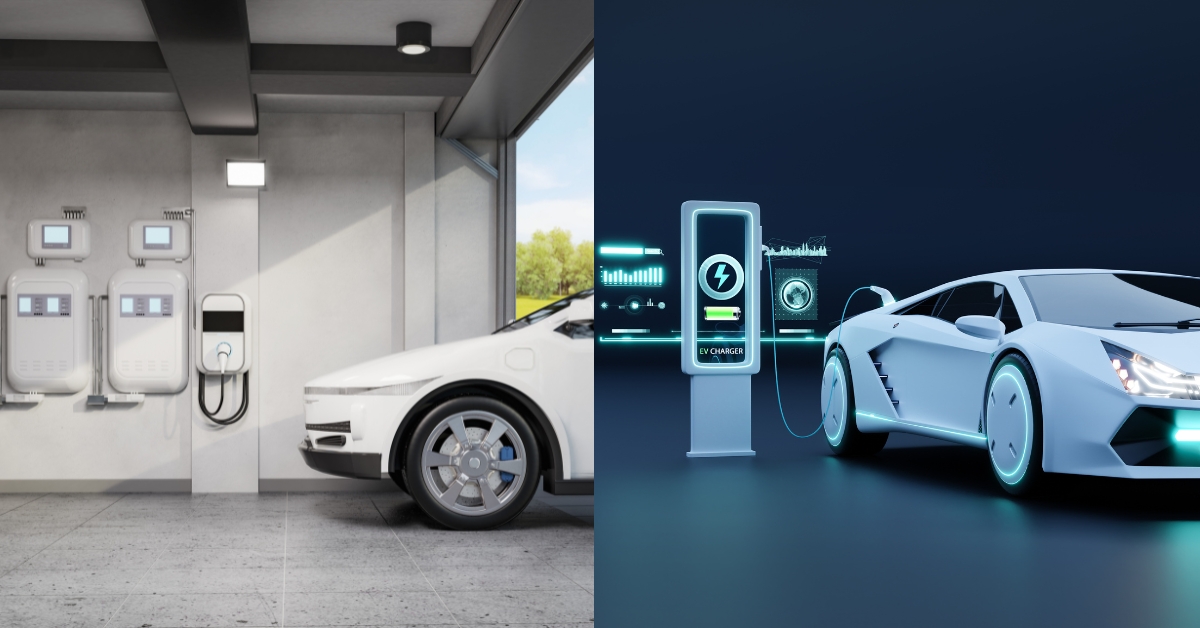
Having the right EV charger can truly transform your electric vehicle experience. These devices are essential for maintaining your car’s quality and ensuring it stays at peak performance. Whether you're a seasoned EV owner or just getting started, understanding the nuances of EV chargers is crucial.
But with any electrical device, several factors come into play before making a choice. When it comes to EV chargers, one of the key decisions you'll face is choosing between a tethered or untethered option. Not sure which one suits your needs best? Don’t worry—we’ve got you covered. We'll break down these options to help you decide whether you need tethered or untethered EV chargers.
For more insights on electric vehicles, check out resources from Tesla and Electric Vehicle Association. Additionally, Energy.gov offers comprehensive information on EV charging technologies.
What Are The Basics of EV Charging Stations?
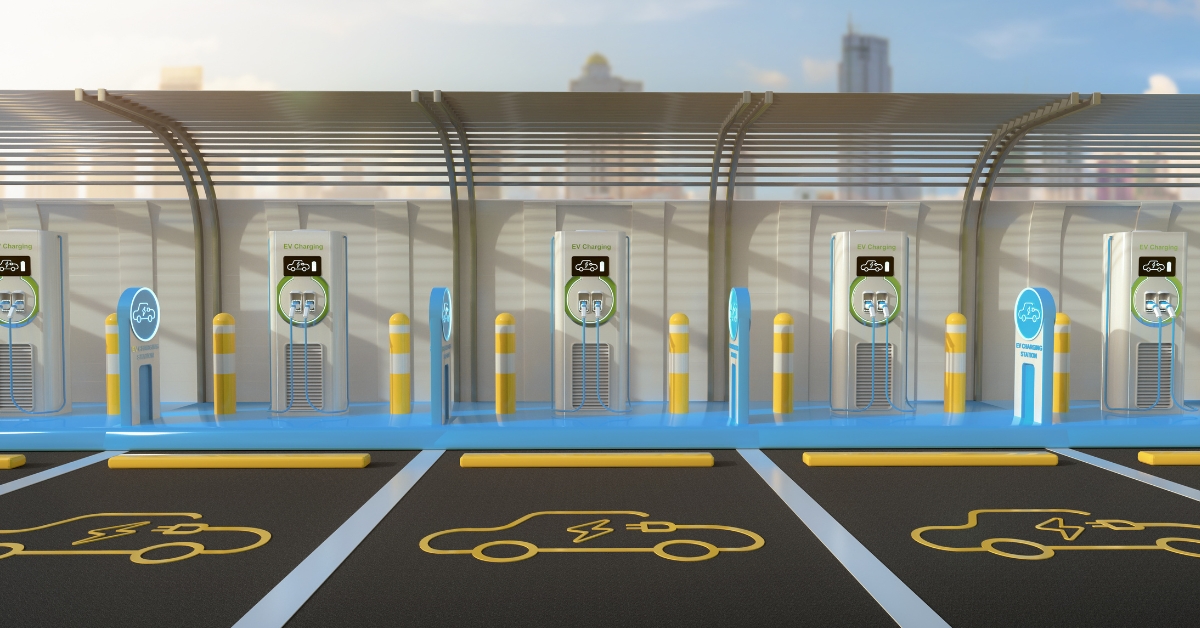
Before diving into tethered and untethered EV chargers, let's explore the fundamentals of EV charge points and how they work. This foundational knowledge will empower you to make an informed decision when selecting the right charger for your vehicle.
An EV charger is a piece of equipment that supplies electrical energy for charging plug-in electric cars. Whether you own a hybrid or a fully battery-powered EV, every electric vehicle requires a high-quality charger to function efficiently.
Just as there are various options for fuel-powered vehicles, you can also choose between multiple EV chargers for your car. Similar to how you would plug in any other electrical device to a charging port, you need to do the same with your electric vehicle. However, each type of car model will require a specific kind of charger, so it's crucial to keep this information in mind.
You can easily install an EV charging point in your home for added convenience. If you're concerned about space, there are several options with sleek and minimalist designs that blend seamlessly into your home environment.
Credit: Drive Green
How To Choose Between Tethered And Untethered EV Chargers?
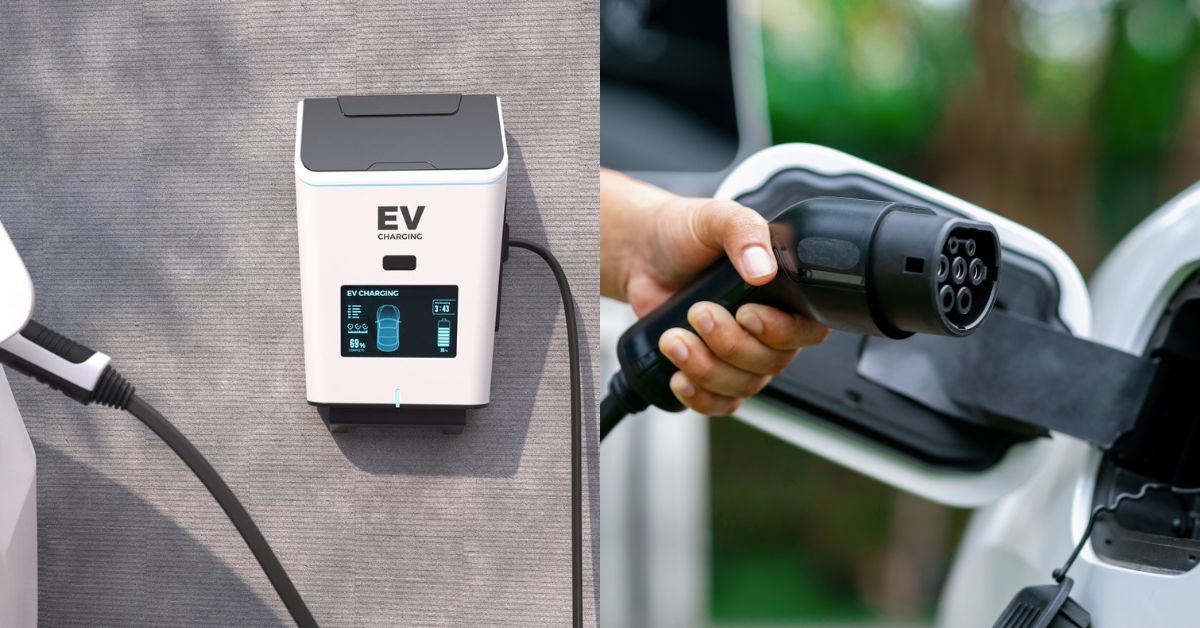
A flexible EV charger can solve many problems, but the choice between tethered or untethered options depends on your specific needs and circumstances. Both options come with their own set of benefits and drawbacks, so let’s take a closer look at each to help you decide.
Tethered EV Chargers
Pros of Tethered Chargers:
- Quick Setup: It takes less time to set up charging for your EV.
- High-Quality Cable: The in-built cable is often of higher quality than aftermarket options.
- No Cable Hassle: You don’t have to worry about forgetting or misplacing the cable.
Cons of Tethered Chargers:
- Bulkiness: The cable could affect the visual appeal of the charger, making it look bulky.
- Cable Management: It can be challenging to keep the cable organised and neat.
A tethered EV charger means the cable is permanently connected to the charging unit. Many homeowners find this configuration convenient because the cable is always on hand. You simply roll out the cable and plug it into your car.
However, there are some downsides to tethered EV chargers, primarily related to the cable’s length. The manufacturer's standard is typically a 5-meter cable, which could limit how you park your car at home. Off-street parking becomes nearly impossible with such a short cable length. However, if you're using tethered public charging, you won’t run into any cable length issues.
Untethered EV Chargers
Pros of Untethered Chargers:
- Sleeker Installation: Tidier installation that takes up less space.
- Cost-Effective: Often much cheaper to install than tethered options.
- Upgrade Flexibility: Easily upgrade to a better cable if needed.
Cons of Untethered Chargers:
- Limited Options: You don’t have many choices when it comes to these types of chargers.
- Risk of Loss: You can risk losing or forgetting your cable.
- Additional Step: Adds an extra step to the EV charging process.
| **Feature** | **Tethered EV Charger** | **Untethered EV Charger** |
|---|---|---|
| **Cable Included** | Yes, permanently attached | No, cable must be provided separately |
| **Setup Time** | Quick and easy setup | Slightly longer due to manual cable handling |
| **Cable Quality** | Generally high-quality, built-in cables | Dependent on user's choice of cable |
| **Visual Appeal** | Can appear bulkier due to attached cable | Sleeker and cleaner installation |
| **Flexibility** | Limited to the cable length provided by manufacturer | High flexibility in cable length and compatibility |
| **Cost** | Typically higher initial cost | Generally lower installation cost |
| **Maintenance** | Manufacturer handles cable maintenance | User responsible for cable upkeep |
| **Use Cases** | Ideal for fixed locations and home use | Suitable for varied environments and public use |
| **Security Features** | Often includes built-in security like locking | Relies on external cables for security |
| **Upgradeability** | Limited, as the cable is fixed | Easily upgrade to a better or longer cable |
| **Compatibility** | Typically compatible with specific EV models | Universal compatibility with various EV models |
| **Aesthetic Integration** | May require more space and can be less discreet | Offers a cleaner look with minimal visible cabling |
In an untethered charging point, there’s no cable provided with the station. Instead, you must get your own cable and manually attach it to your car’s charging port. Often, you can purchase this cable when you buy your car, and it’s always a good idea to have an extra on hand.
While the extra step might seem inconvenient, untethered chargers offer more flexibility. You can charge any electric car because the socket is universal. Additionally, you’re not limited by the cable length; simply measure your ideal parking distance and buy an appropriate cable.
For homeowners, untethered chargers provide a cleaner look without the mess of visible cabling. Ultimately, the choice between tethered and untethered chargers boils down to user preference, so consider this factor carefully before purchasing your home EV charger.
Other Factors To Consider When Choosing an EV Charger
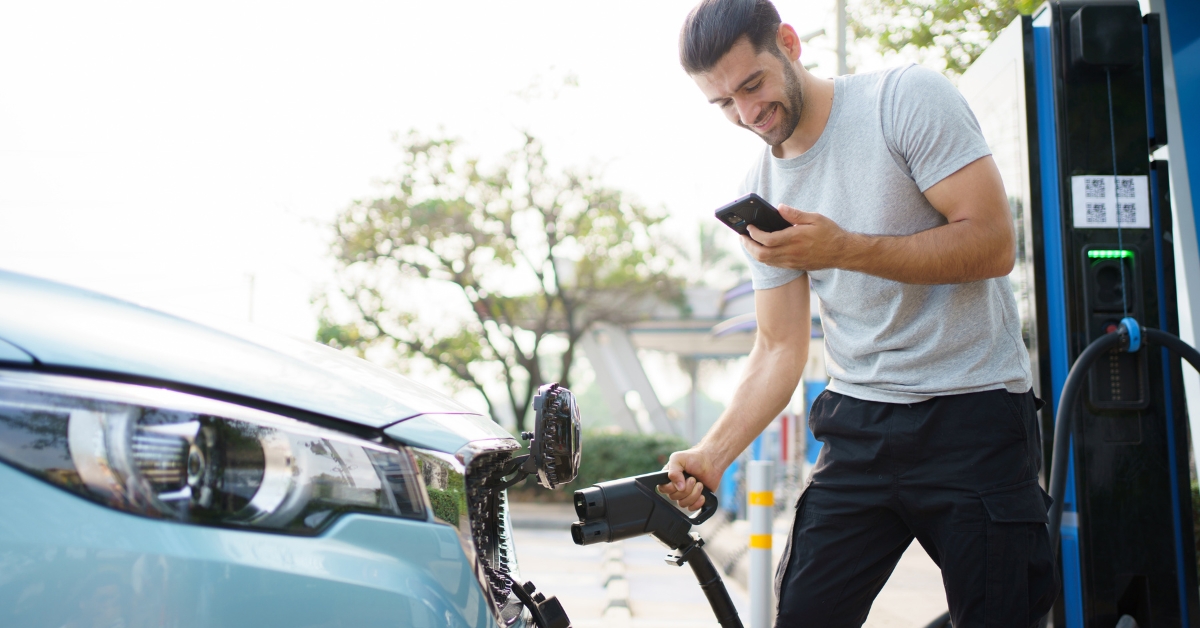
Apart from deciding between tethered or untethered charging ports, several other factors can influence your choice of EV charger. These considerations can even help you decide between cabled or cable-free charging options.
Decide Where To Install It
The location of your EV charging station is crucial to its functionality. In a domestic setting, you will likely install the charger in your garage or driveway to ensure enough space and easy access. The charger's cable length will also play a role in determining its optimal placement.
Ensure that the EV charger is located close to the electrical panel to prevent any power interruptions in the future. If you’re unsure about the best location for your EV charger, consulting a qualified electrician can provide you with valuable insights and recommendations.
Consider The Charging Speed And Cost
Charging speed significantly impacts both the cost and the practicality of your EV charger. Generally, the higher the kW output of the charging port, the faster your EV will be charged. Fast chargers might be more expensive to install, but they offer the convenience of quicker charging times.
For households, a fast charger is often the ideal option because it provides ample energy to your vehicle without being overly expensive to install. Depending on the capacity and model of your EV, you can expect chargers to range between 7 kW to 22 kW. This allows you to leave your car plugged in overnight and enjoy a fully charged vehicle the next day.
Choose Between A Single-Phase or Three-Phase Charger
Standard residential power outlets are usually single-phase AC devices, while commercial outlets can supply electric cars with three-phase AC. The primary difference is that single-phase chargers provide only a third of the power that three-phase models do, meaning it will take three times longer to charge your EV.
If you plug your EV into a standard single-phase AC outlet, it could take anywhere from 8 to 12 hours to charge from zero to full capacity. However, if you opt for a three-phase charger, you can significantly reduce the charging time, making your EV more versatile and convenient to use.
If you currently own a single-phase charger, upgrading the cable to a three-phase charging system is a straightforward process that can enhance your EV's charging capabilities.
Other High-Quality Features
With rapid innovation in the EV industry, consumers can expect even more advanced chargers in the future. Some excellent features to look out for include:
- Monitoring: Easily monitor your EV’s charging status through a smartphone or tablet.
- Locking Mechanism: Protect your EV charger from unauthorised use with traditional lock and key systems or modern app-based locks that use entry codes and facial recognition.
- Earthing: Most EV chargers require an earthing rod for added safety, but some modern chargers have an in-built earthing component to prevent electric shock and overloading.
- Remote Control: Smart EV chargers allow you to control charging remotely, set schedules, and manage energy usage efficiently.
These features not only enhance the functionality of your EV charger but also provide added security and convenience.
What Are The Different EV Charging Levels?
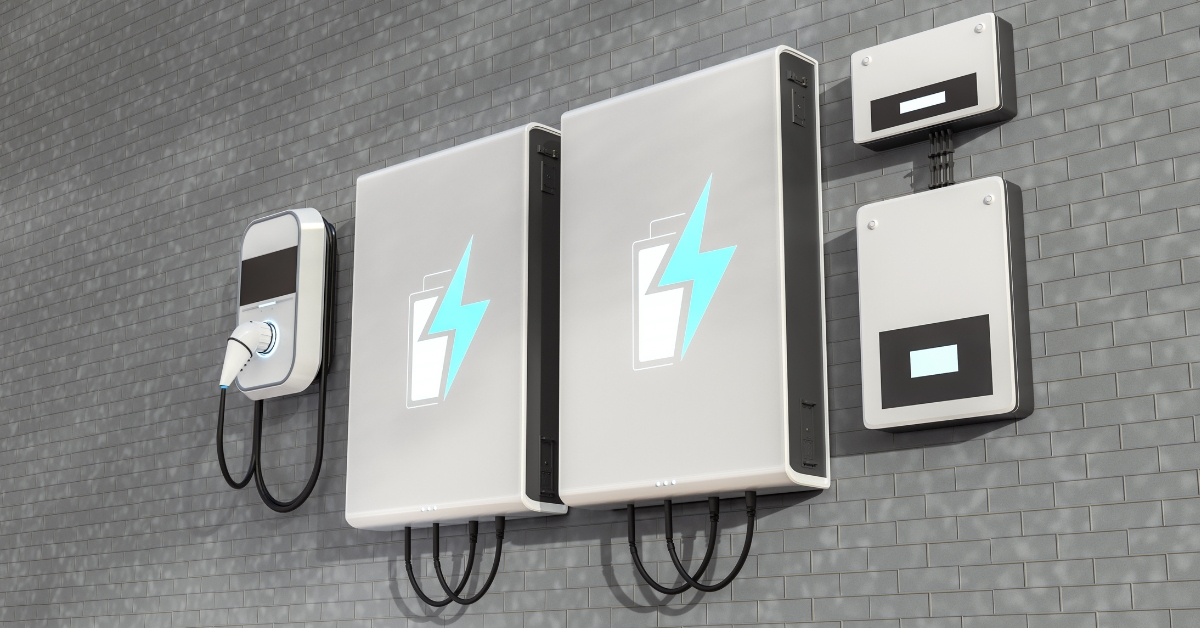
Not all electric chargers are built the same. Some EV chargers are much faster at topping up your car, while others have a higher energy capacity. In general, charging is categorised into three common levels: Level 1, Level 2, and Level 3. The higher the charger level, the higher the energy output and the faster your car will charge.
Despite these levels, there are still some variations based on the type of battery and the vehicle’s charging capacity. Let’s break down the different charging levels to see how they work.
Level 1 Charging
Level 1 charging refers to plugging your electric car into a standard AC power outlet using a regular household plug. Since a general household socket typically delivers around 2.3 kW of energy, using a Level 1 charger is one of the slowest ways to recharge an EV. In some cases, this energy will only add about 6 to 8 kilometers of range per hour of charging.
Additionally, Level 1 chargers lack communication between the power panel and the car, which can pose safety risks. Due to these reasons, Level 1 charging is best reserved for emergencies or situations where other charging options are unavailable.
Level 2 Charging
Level 2 charging stations are a significant step up from Level 1. These chargers are typically mounted to a wall, a pole, or positioned in the ground, delivering energy between 3.4 kW to 22 kW. You can find Level 2 chargers in residential properties, public parking areas, and commercial locations.
With a maximum charging output of 22 kW, an hour of Level 2 charging can provide a substantial driving range, making it ideal for households. The higher charging capacity, combined with smart connectivity options and multiple safety features, makes Level 2 charging a popular choice among EV owners.
Level 3 Charging
Often referred to as DC fast charging, Level 3 chargers use direct current (DC) energy to power a car’s battery directly, bypassing the need for an onboard converter. This allows Level 3 charging stations to provide high-powered charging at a significantly faster rate, making them ideal for public locations where quick turnaround times are essential.
However, the charging time can still vary depending on the EV model and the power outlet. Generally, you can expect a fully charged EV in mere minutes with a Level 3 charger. Due to their high power output and costly installation, Level 3 chargers are not typically suitable for residential installation but are widely available in public spaces.
Understanding AC vs DC Charging
When you charge an electric vehicle, the alternating current (AC) from the power grid must be converted into direct current (DC) to power your car. Understanding the difference between AC and DC charging is essential for choosing the right charger for your needs.
- DC Charging: DC chargers automatically convert AC to DC, allowing for faster charging speeds. These chargers typically offer higher power outputs, often up to 100 kW or more, making them ideal for rapid charging needs. However, DC chargers tend to be more expensive than their AC counterparts.
- AC Charging: With AC chargers, the vehicle itself converts the AC power to DC, but at a slower rate. This is why most AC chargers top out at around 22 kW, whereas DC chargers can go much higher. While AC chargers are generally more affordable, they provide slower charging speeds compared to DC models.
Choosing between AC and DC charging largely depends on your specific needs, budget, and the charging infrastructure available to you.
Credit: SolarQuotes
What Are The Different Types of EV Charging Speeds?
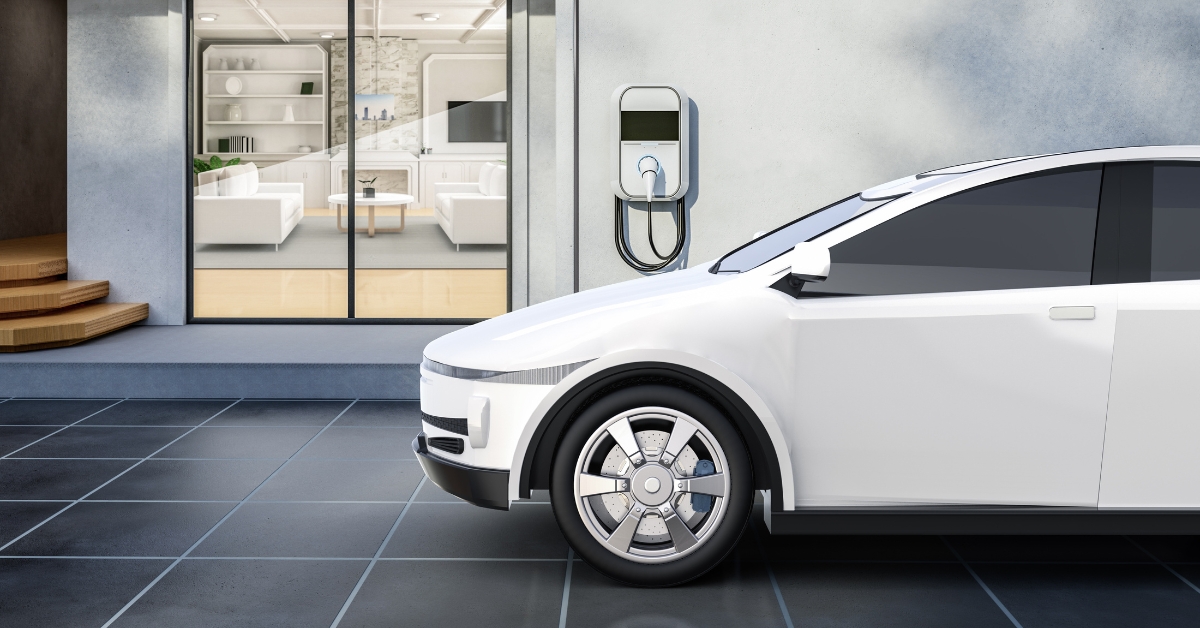
As mentioned earlier, EV chargers come in various speeds, each catering to different charging needs. Here are four of the most common charging speeds available for EV chargers:
Slow EV Charging Points
Slow charging stations are often the most economical option. These chargers are ideal if your car is parked for several hours, such as overnight or during your workday. Slow chargers typically range between 2.3 kW to 6 kW, with some reaching up to 3 kW. One critical thing to remember is that slow EV chargers are usually untethered, meaning you need to have your own cable to connect them to the charge point.
Fast EV Charging Points
Fast EV chargers offer a better charging performance compared to slow chargers. They are perfect if you leave your car parked for a few hours, such as during a shopping trip or a few hours at work. Fast chargers range from 7 kW to 22 kW and are commonly found outside homes, in public parking areas, and at commercial locations.
Rapid EV Charging Points
For those who need high-speed charging, rapid EV chargers are the way to go. These chargers typically range between 50 kW to 100 kW, allowing you to fully charge your vehicle in less than 30 minutes. Despite their high speeds, rapid chargers are not suitable for household installation due to their costly setup. Instead, they are commonly found in public spaces like highways, shopping centers, and large parking lots.
Ultra-Rapid EV Charging Points
Ultra-rapid EV chargers take charging speeds to the next level, providing power outputs of 100 kW or more. These chargers can top up your car in just minutes, making them incredibly convenient for long-distance travel or quick stops. However, like rapid chargers, ultra-rapid chargers are typically not feasible for residential installation and are best suited for strategic public locations.
What Are The Best EV Chargers?
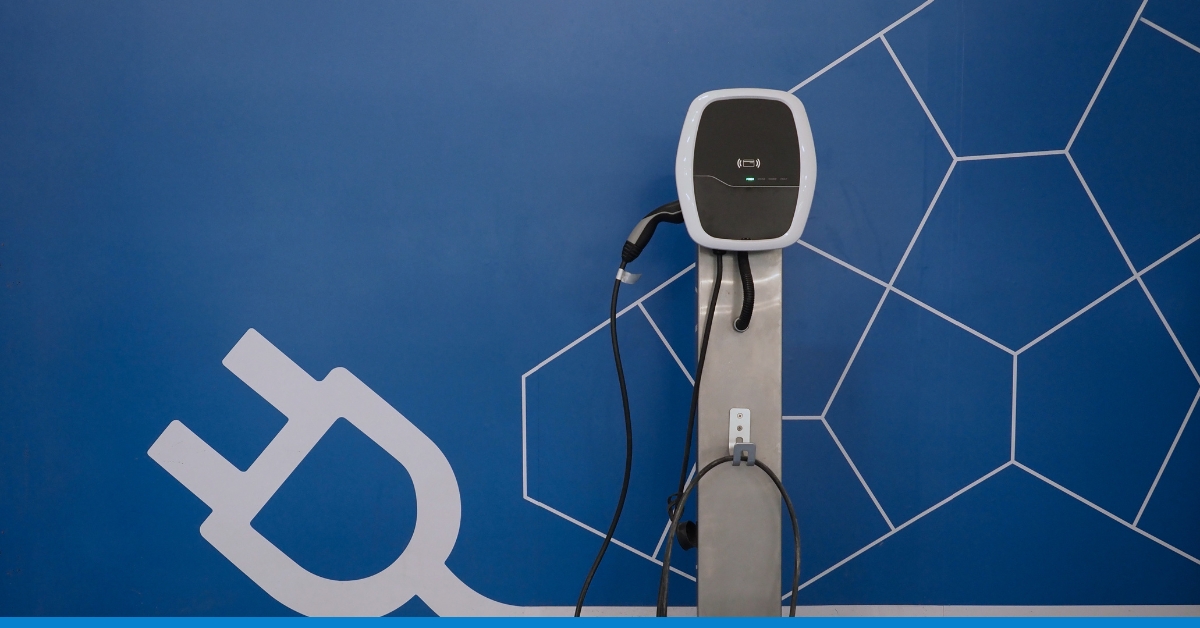
Once you’ve chosen between a tethered or untethered EV charger, the next step is selecting a high-performance unit to keep your vehicle running smoothly. At Meteor Electrical, we stock a wide selection of top-quality EV chargers to suit every setup—whether it’s for your home, workplace, or a commercial installation. We’ve partnered with trusted names like Garo and BG SyncEV to offer solutions that combine smart features with durability and reliability.
⚡ Garo LS4 Dual 22kW Ground Mounted Charger
Perfect for high-demand environments, this heavy-duty LS4 EV Charging Station features 2 x 22kW metered outlets with Ethernet (LAN) capabilities. Whether you need to support multiple vehicles or enable fast charging at a commercial site, this ground-mounted solution delivers efficiency and control. Available with metered-only or metered-and-Ethernet models.
⚡ Garo Entity 7.4kW Socket Charger + Load Management (60A)
Designed for smart residential charging, the Garo Entity 7.4kW charger offers a socket outlet configuration and built-in load management. This makes it an excellent choice for homes where electrical load needs to be balanced, helping to protect the main fuse and optimise energy use.
⚡ BG SyncEV Wall Charger 7.4kW Tethered with Wi-Fi & LAN
Looking for an easy-to-install, compact charger? The BG SyncEV Wall Charger 2 is a 7.4kW tethered unit with both Wi-Fi and LAN support. Its sleek design and smart connectivity make it a standout choice for domestic users who want performance without the bulk.
⚡ Garo 7.4kW Type 2 Chargers – Socket or 7.5m Tethered Lead
Choose from either a Type 2 socket outlet version or the 7.5-meter tethered lead model, both offering Garo’s trusted build quality. These options give you the flexibility to match your charger to your parking space and EV type, while ensuring reliable performance for everyday use.
EV RFID Tags (5-Pack)
Add an extra layer of access control to your charging station with these RFID tags, compatible with many smart EV chargers. Perfect for shared charging points or managing access for multiple users.
Find All Your EV Charging Solutions At Meteor Electrical
At Meteor Electrical, we offer a wide array of EV charging options to suit every need. Whether you're looking for a home charging solution, a commercial charging station, or accessories to support and upgrade your current setup, we've got you covered.
Why Choose Meteor Electrical?
- Expertise: With years of experience in the electrical industry, our team is knowledgeable and ready to assist you in finding the perfect EV charging solution.
- Quality Products: We stock only the best products from trusted brands like Garo, ensuring reliability and performance.
- Customer Support: Our dedicated customer support team is here to help you with installation, troubleshooting, and any questions you may have about your EV charger.
Explore Our Range
From standard chargers to advanced smart charging solutions, Meteor Electrical has everything you need to keep your electric vehicle running smoothly. Visit our EV Charging Solutions page to explore our full range of products and find the perfect charger for your needs.
By choosing the right EV charger with Meteor Electrical, you ensure that your electric vehicle remains in optimal condition, providing you with a seamless and efficient driving experience. Whether you opt for a tethered or untethered charger, understanding the differences and benefits of each option will help you make an informed decision tailored to your lifestyle and needs.
For more information and to browse our selection of EV chargers, visit Meteor Electrical today!
Frequently Asked Questions (FAQs)
1. What is the main difference between tethered and untethered EV chargers?
The primary difference lies in the presence of a built-in cable. Tethered EV chargers come with a permanently attached cable, making them ready to use immediately. In contrast, untethered EV chargers do not include a cable, allowing users to choose and attach their own, offering more flexibility in cable length and compatibility with different vehicles.
2. Which type of EV charger is more suitable for home installation, tethered or untethered?
Tethered EV chargers are often preferred for home installations due to their convenience and ease of use, as the cable is always available. However, untethered chargers can be a better choice if you prefer a cleaner installation without visible cables and want the flexibility to upgrade or use different cable lengths as needed.
3. Can I switch from a single-phase to a three-phase EV charger in the future?
Yes, you can upgrade from a single-phase to a three-phase EV charger to increase your charging speed. While single-phase chargers provide sufficient power for most residential needs, three-phase chargers offer faster charging times, which can be beneficial if you require quicker turnaround or have multiple EVs.
4. Are there any safety features I should look for in an EV charger?
Absolutely. Key safety features to consider include Dynamic Load Management (DLM) to protect your electrical system, locking mechanisms to prevent unauthorised use, earthing components to avoid electric shocks, and overload protection to ensure safe charging. Additionally, smart chargers with monitoring capabilities can enhance safety by allowing you to track and control the charging process remotely.
5. How do charging speeds differ between Level 1, Level 2, and Level 3 EV chargers?
- Level 1 Chargers: Utilise a standard household outlet (2.3 kW) and provide the slowest charging, adding about 6-8 kilometers of range per hour.
- Level 2 Chargers: Offer faster charging with power outputs between 3.4 kW to 22 kW, adding significant range within a few hours, making them ideal for home and public use.
- Level 3 Chargers (DC Fast Chargers): Deliver the highest power (50 kW to 100 kW or more), enabling rapid charging that can fully charge an EV in less than 30 minutes, suitable for commercial and public locations.

